- Best Soaker Hose Options Your Yard Truly Needs This Year - January 5, 2024
- Best Tomato Planters You Should Really Consider for Your Garden - December 21, 2023
- Best Home Depot Tomato Cages to Support Your Plants - December 16, 2023
I’m a big fan of unusual-looking fruits and vegetables. Once I find one in an uncommon color or shape, I have to try it. Recently, I found white watermelon, purple sunflowers, and yellow tomatoes. With each discovery, I had to learn more. My curiosity made me want to grow and cook with these unusual finds. But none more so than the lemony-yellow Lemon Boy Tomatoes.
These tomatoes are cool. And that is why I took the time to learn how to grow them and cook them. But what’s the point of learning all that information if I don’t share it with someone? This is where you come in.
I’m writing this article to share my latest discovery with another tomato-loving friend. I hope that you will be inspired to try this tomato variety for yourself. Once you finish this article, I know you will have all you need to grow a beautiful garden of yellow tomatoes.
Bottom Line Up Front
Yes, these tomatoes are cool, but learning about them does take time. If you’re already elbow-deep in your garden, you may need to wait until harvest time is over to read this article. I hope you do find the time to finish this article, but until then, let this summary suffice.
Lemon Boy tomatoes are a hybrid indeterminate tomato that was released for public use in 1984. Their popularity has soared in the culinary and garden worlds for good reason.
The bright and sunny yellow flesh of the fruits is attractive to see and taste in recipes, while the plants are resistant to many common tomato pests and diseases. Because of these qualities and their easy-to-grow nature, I enjoy this tomato variety. I think you will too.
How to Identify Lemon Boy Tomatoes
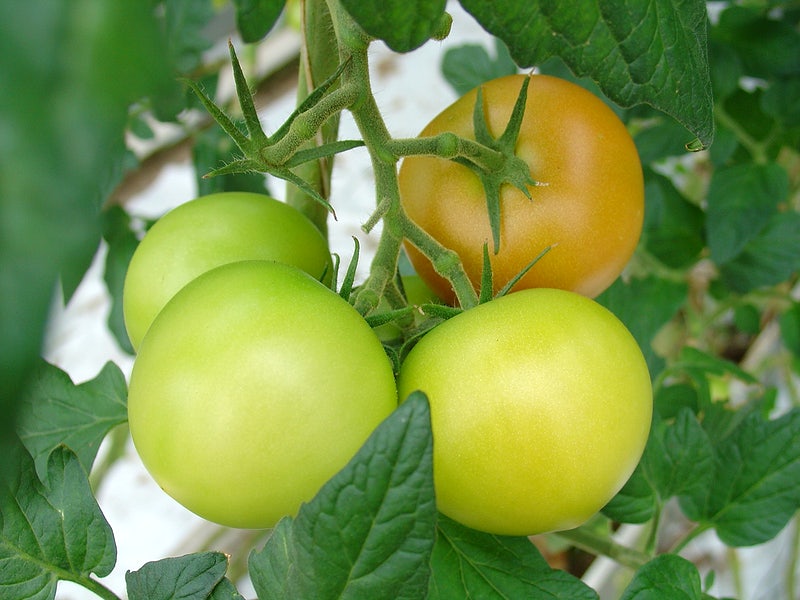
Unlike most red tomato varieties, Lemon Boy tomatoes are easy to identify. If you know what a lemon looks like, you can pick out one of these from the crowd. The skin and pulp of this tomato are surprisingly yellow; in fact, they almost look fake. The fruit itself grows to a moderately sized 7 to 8 ounces. The plant is indeterminate so the vines can grow very long.
How to Grow Lemon Boy Tomatoes from Seed
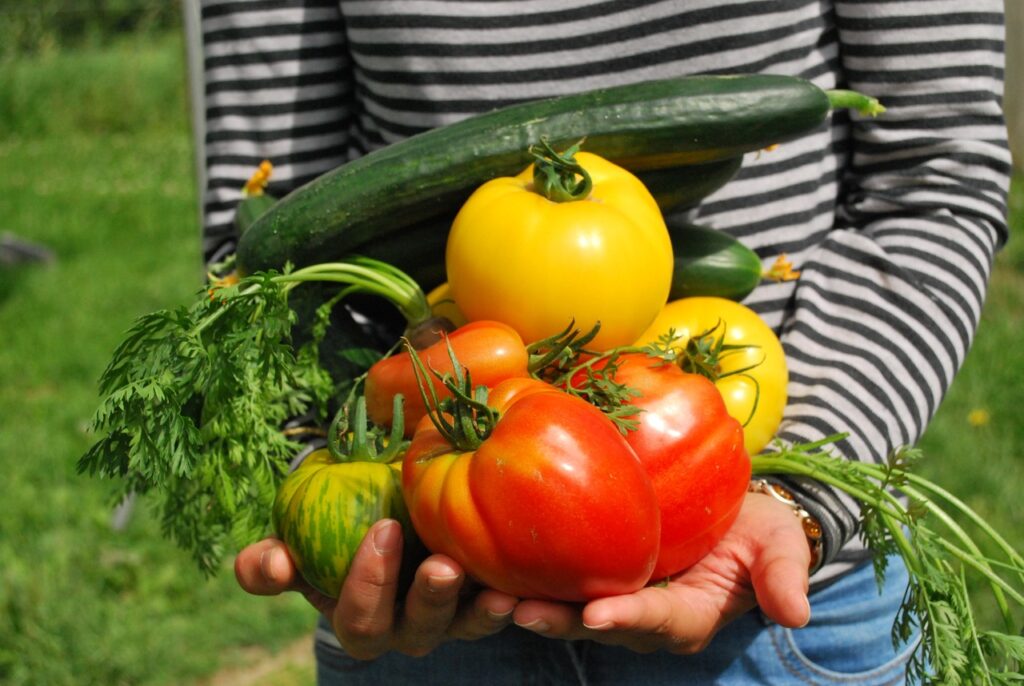
When you grow tomatoes from seed, whether it is the Lemon Boy variety or any other, you first need to gather a few gardening supplies. This is my recommended list of supplies:
- Tomato seeds
- Seed starter tray
- Seed starter soil
- Spray bottle
- Heat mat
- Grow lights
With your supplies in hand, you are ready to grow a tomato plant. Honestly, I think this is a really fun part of growing a garden, so I usually let my toddler help with parts of it. Who you get to assist, if anyone, is up to you. Just be sure to relax and have fun. Here are my best practices when I plant Lemon Boy tomato seeds:
- I spread an even layer of seed starter soil in the seed starter tray
- I let my toddler set the tomato seeds into the soil while I ensure they are around a quarter of an inch deep
- I let my toddler moisten the soil by spraying it with a spray bottle filled with water (this variety loves moisture)
- I attach the seed tray lid to the seed tray
- I set the seed tray on top of the heat mat
- I spray the soil daily ensuring that it is moist, not soggy
- I remove the seed tray lid once sprouts appear
- I move the seed tray into a sunny window or under the grow lights once the tray lid has been permanently removed
- I continue spraying the soil daily to moisten it
- I harden sprouts that are 7” tall
- I transfer sprouts outside once the threat of frost has passed
How to Harvest Lemon Boy Tomatoes Seeds

Lemon Boy tomatoes are a hybrid variety. This means that you will not get a true-to-variety tomato from harvested seeds. I recommend that you purchase seeds from a reputable company rather than harvest your own. If, however, you insist that this is the gardening method for you, here are the steps you need to follow:
- Isolate your tomato plants to reduce the risk of cross-pollination
- At harvest time, select healthy tomatoes that are located near the center of the plant (these tomatoes are less likely to have been cross-pollinated than those along the outside edges of the plant)
- Cut the tomatoes in half
- Separate the seeds from the pulp (you can use the pulp and skin for cooking)
- Rinse the seeds and place them in a single layer on a clean paper towel
- Allow the seeds to completely dry for several weeks
- Store the dried seeds in a paper envelope that has the date and tomato variety listed on it
- Store the paper envelope containing the seeds in a cool, dry, and dark place
When to Plant Lemon Boy Tomatoes
Since these are delicate plants, especially when they are young, they should only be transplanted outdoors once the threat of frost has passed. You can reference this website for an accurate take on springtime weather conditions.
Along with referencing the end of frost for the season, I also wait to transplant my tomato plants outdoors until nighttime temperatures remain above 50° F and soil temperatures are above 65° F.
How to Plant Lemon Boy Tomatoes
When my local weather is amicable for transplanting tomatoes, I gather my gardening tools and head outside. With a shovel, I dig 12” deep holes for each tomato plant to ensure they are spaced 24” apart. I keep my Lemon Boy tomato plants spread out so I don’t risk transferring diseases from one plant to another.
I then place a little compost in the bottom of each hole to help with plant nutrition right from the start. Next, I gently place each plant into a hole and secure them with some of the dirt piled on the side. Then, I set up a trellis for extra stability. Since Lemon Boy tomatoes are indeterminate, they need plenty of vining support. Finally, I water the plants, knowing that they are all set up for success.
Best Lemon Boy Tomato Fertilizer

I wait to fertilize my tomato plants until they show signs of fruit production. When I feed my Lemon Boy tomato plants, I use Miracle-Gro Tomato Plant Food. With this gentle formula, I know my plants will get the nourishment they need without the risk of injury to their root systems.
Lemon Boy Tomato Soil Requirements
I always test my soil before planting anything in it. This is important because if you put a plant in the wrong type of soil, it could just wither and die. There’s no good reason to work hard planting a garden, and then, watch it underproduce or die without producing anything. For this reason, I recommend that you take this extra step too.
Firstly, I make sure the soil is the right type. Lemon Boy tomatoes require light, nutritious, and well-draining soil. If your garden does not have this type of soil, you can make adjustments to it. I like to add some compost to my soil to encourage better drainage and nutrition. The ideal ratio of compost to natural soil is 1:3.
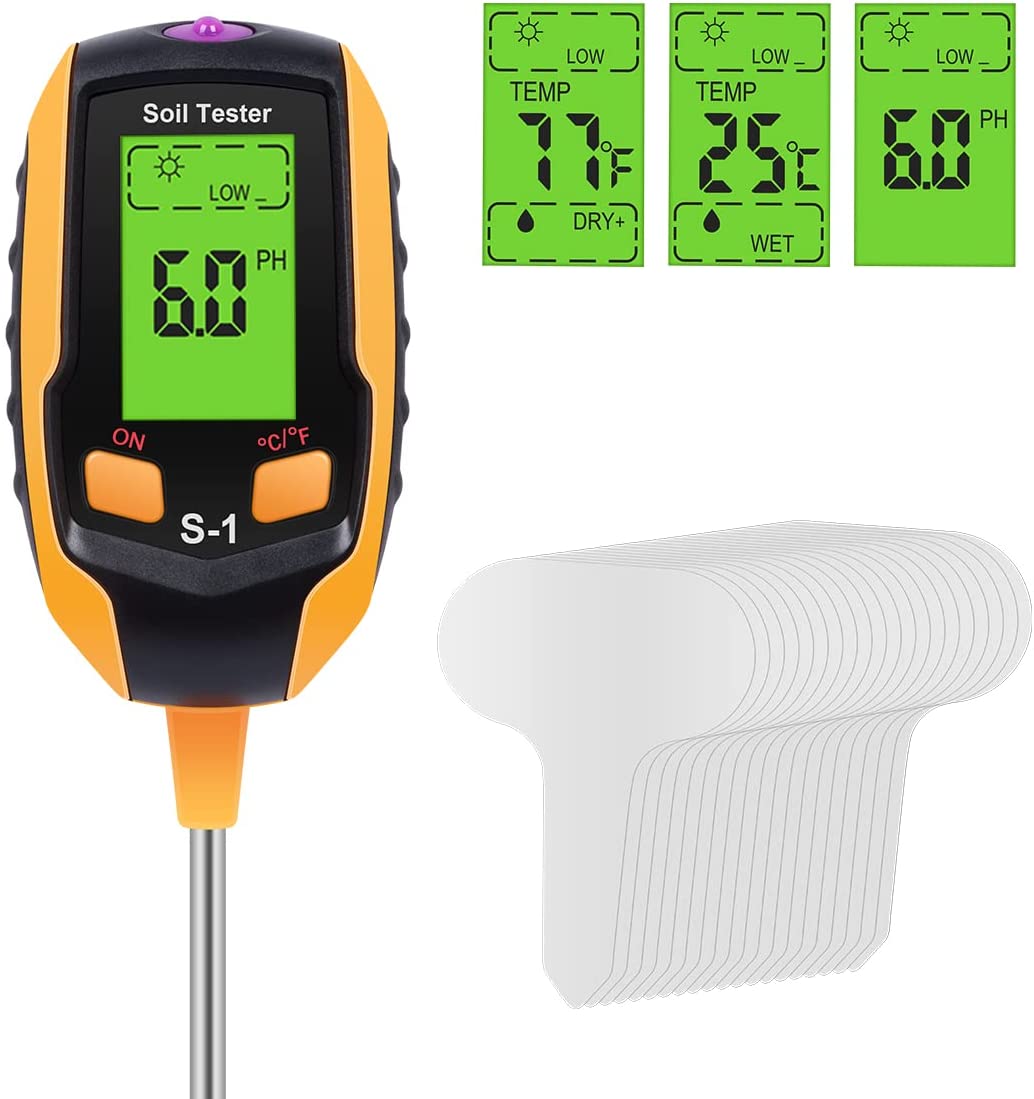
Secondly, I check the soil pH levels with a soil pH tester. For Lemon Boy tomato plants, I am looking for pH levels that are near 6.5. If the pH levels are too far from this number, I will adjust them accordingly. To lower the acidity in the soil, I add ground lime. To raise the acidity, I add wood ash.
Thirdly and finally, I make sure the place where I plan to plant Lemon Boy tomatoes has access to full sunlight and will not be near any unfriendly neighbors. Plants such as broccoli, corn, and potatoes are apt to share their pest infestations and diseases with my tomatoes. Since I would rather avoid this type of collaboration, I try to plant unfriendly neighbors at opposite ends of the garden.
Lemon Boy Tomato Light Requirements
This variety requires plenty of sunlight. That is why I plan out my garden before I dig even one hole in it. I want to ensure that my Lemon Boy tomatoes can receive at least six hours of full sunlight every day. In turn, this assures me of a healthy plant.
Lemon Boy Tomato Water Requirements
All tomato varieties require a lot of water, but Lemon Boy may require more than the rest. I make sure these tomatoes have moist soil when they are seeds and sprouts by spraying them with a water spray bottle. Once they have been transplanted to an outdoor spot, I check their soil daily and water them when the top two inches of their soil are dry.

I like to water all my tomato plants, including Lemon Boy, with a soaker hose. This enables me to get water to their roots without damaging their stems, leaves, and fruits.
Best Lemon Boy Tomato Companion Plantings
Choosing garden companion plants is a fun project for me, especially when it comes to finding neighbors for my tomato plants. For my Lemon Boy tomatoes plants, I typically choose herbs that will also pair well in the kitchen. Here are three of my favorite companion plantings for Lemon Boy tomatoes:
Basil

This herb tastes great on tomato sandwiches and tomato sauces, so I am very happy that it likes to grow next to my tomato plants. Not only are these two conveniently located in my garden, but with them side-by-side, my tomato plants are less likely to be attacked by aphids and whiteflies.
Oregano
This herb is essential for great-tasting tomato sauces and authentic Greek salads, so I choose to grow plenty each year. Here again, we have a plant that works well as a garden and a kitchen companion to Lemon Boy tomatoes. With oregano next to my tomatoes, I know they are protected against aphid infestations.
Parsley
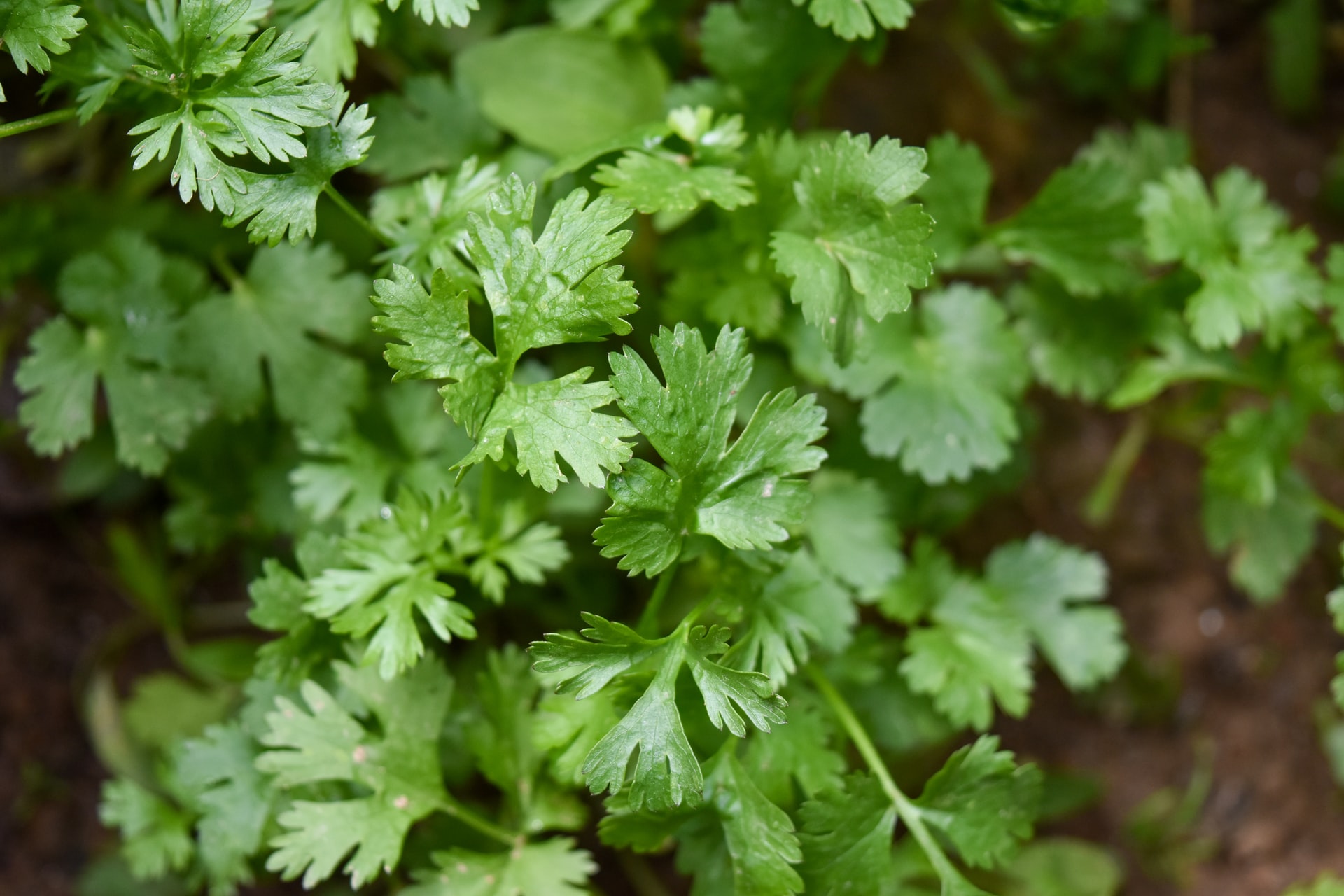
While this is not my favorite herb to eat with tomatoes, it can brighten up a tomato-based soup. What I do love about parsley is its ability to attract beneficial insects to my garden. By setting it next to my Lemon Boy tomato plants, I know the good insects are welcome to do their job and the pesky insects are encouraged to leave.
Lemon Boy Tomato Treatments and Maintenance
Okay, here is where Lemon Boy tomatoes have an advantage over many other types of tomatoes. This variety is resilient against Alternaria, Fusarium Wilt, Gray Leaf Spot, Nematodes, and Verticillium Wilt. Also, because parts of the plant are poisonous, many insects will avoid touching Lemon Boy plants altogether. You can’t get better than a plant that can defend itself from disease and insects.
In reality, the one pest that can harm your Lemon Boy tomato plants the most is a bird. Birds are attracted to the bright yellow tomatoes which they enjoy munching on. I have tried a few different methods to keep birds away, with varying degrees of success. Here are three of the most successful methods I’ve tried:
- I have covered the plants with a bird net that my uncle spread over a PVC pipe cage
- I have tied CDs in nearby bushes and trees
- I have set out bicycle reflectors on stakes near the tomato plants
Where to Purchase Lemon Boy Tomatoes Online
If you can’t find Lemon Boy tomato seeds or plants at your local garden supply store, you can always order some online. I like getting my plants online so I don’t have to wander around town or a store to find them. I have a toddler, after all. That means shopping is extra challenging right now.
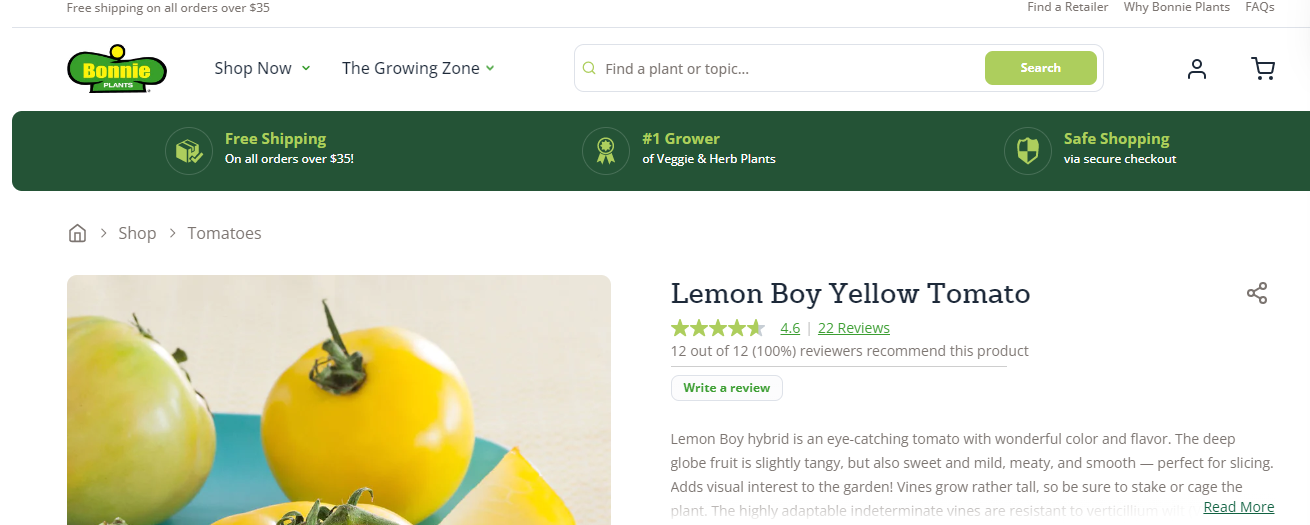
Here are my favorite online plant supply shops that also sell Lemon Boy tomatoes:
FAQs
Answer: No, they do not. While this variety does offer a lot of other healthful vitamins and minerals, this is one compound it does not contain.
Answer: Honestly, this is an issue of personal preference; they will taste good either way. I choose to use my Lemon Boy tomatoes in recipes that keep them raw so I can enjoy their bright yellow color.
Answer: No, not the fruit part at least. When ingested in large quantities, it is the stem and the leaves of the plant that are the poisonous parts. I doubt you’ll want to munch on these anyway. Fortunately, insects don’t want to munch on them either.
In Conclusion
I hope that you have found Lemon Boy tomatoes as delightful as I have. I have discovered that these yummy and sunshiny fruits are delightful to grow and eat. Try them in your garden next year. Try them in your salad this week. Whatever you do, just try them.
For a little extra help around the garden, browse these two articles that deal with specific issues faced by tomato plants.

